37 Search Results for praactical teaching in the asd classroom
December 26, 2013
by Carole Zangari -
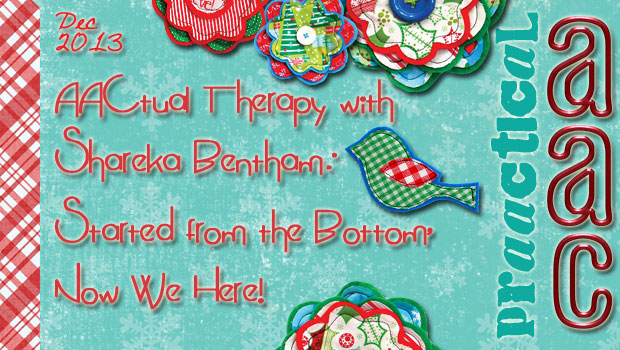
We’re so thrilled to have Shareka Bentham back as an AACtual Therapist, this time talking about her journey into high tech AAC. You can see other posts from Shareka here. One of our colleagues completed the AAC evaluation on a client of Shareka’s. While preparations for that evaluation were underway, we were fortunate enough to learn of an AAC device that was no longer needed. The family agreed to donate it to this little fellow, and that seems to have launched a whole chain of prAACtical events. Shareka takes it from here… Sadly, this is not the first step into my career as a rapping superstar, but more a description of my journey from ‘no tech’ to high tech in AAC use. If someone had told me a year ago that I would be showing off my skills on a high tech AAC device, and teaching children, parents, and teachers... [Read More...]
November 26, 2013
by Carole Zangari -

Teaching language can be a sticky business. The concepts can be quite abstract, and that’s a challenge for many AAC learners. It can take some real thought to figure out how to simplify complexity. Beyond that, we have to teach in a way that helps learners retain the new information. Here are some of the things we think about when we’re running the our mental checklist of teaching options. 1. Graphic Organizers: There are so many ways to use graphic organizers to help simplify complex concepts. Use them to show relationships between things, sequences, and component parts. 2. Use a Story: Social narratives are somewhat like social stories, but don’t adhere to the same strict design parameters as a true social story. The TASN project in Kansas has almost 150 of them on a variety of topics on their website. You can check them out here. Most are in .doc,... [Read More...]
June 28, 2013
by Carole Zangari -
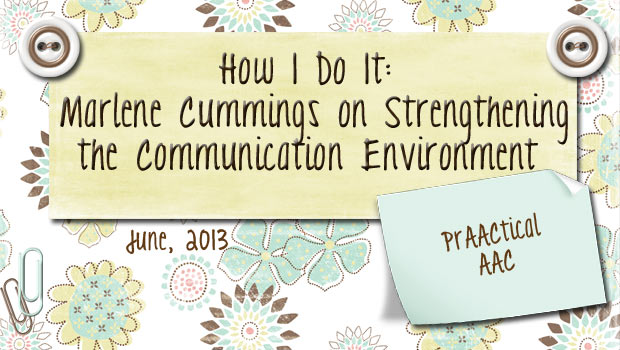
Marlene Cummings is back to share some thoughts on creating communication-friendly environments. As an AAC consultant to the Oakland Schools, Marlene gets to support AAC implementation in a variety of classrooms with all types of learners. You can read her earlier posts here and here. ::::::::::::::::::::::::::::::::::::::::::::::::::::::::::::::::::::::::::::::::::::::::::::::::::::::::::::::::::::::::::::::::::::::::::::::::::::::::: 5 Things to Consider in the “Communication Environment” The first thing we want to ask: Is language being represented visibly? We in AAC are often known by our “stuff”. Because we need to represent language visibly and love technology, we typically have a lot of “stuff”. I, for one, currently have a large storage unit holding 30+ years of “stuff” waiting to be distributed to all my new teams since I am no longer in the classroom. Let’s start by looking around our instructional environment. It is our intention to model the use of language being represented visibly and to provide the vocabulary and opportunities for... [Read More...]
January 4, 2013
by Carole Zangari -
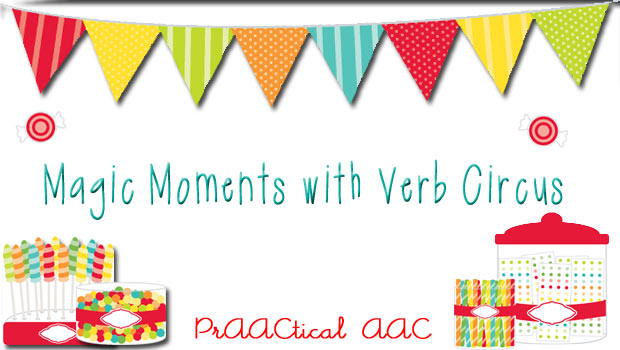
We are so excited to see the expanded web presence by SLPs who are blogging, running groups on Facebook, sharing resources on Pinterest, and maintaining online stores on TeachersPayTeachers. We’ve been thinking about how to connect with some of these creative professionals, both to extend our own professional learning networks and also to broaden the reach of our AAC message. Recently, when an opportunity to forge a few connections presented itself, we decided to collaborate with a few new SLP friends. Periodically, we will be featuring the materials of a fellow SLP who typically writes for colleagues serving primarily children with high incidence disabilities. They post great ideas and materials for students with articulation and phonological difficulties, fluency problems, and language disorders. We hope to put a prAACtical spin on their great ideas. In our inaugural post of this type, we hope to inspire some Magic Moments with fellow SLP Jocelyn... [Read More...]
May 31, 2012
by Carole Zangari -
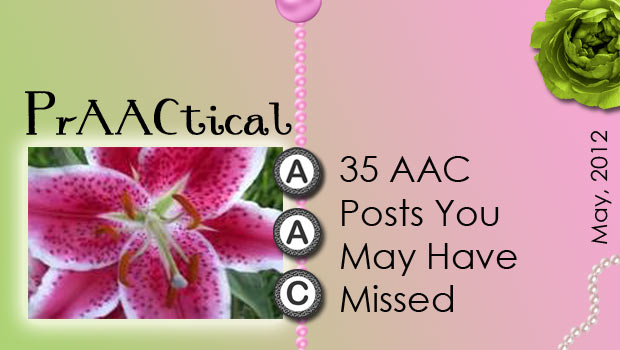
The Fives 1. 5 Sites for Professionals who are Supporting Military Families with Special Needs Children 2. 5 Charitable Programs that Support Funding for Communication through Mobile Devices 3. 5 Sites for Tools & Tips on Self-Calming & Behavior Regulation 4. Five (More) Resources for Supporting Friendships in Individuals Who Use AAC PrAACtical Thinking Updated: 59 Free and Lite AAC Apps Magic Moments with Qwiki: PrAACtical Learning for Older Students and Adults PrAACtical Teaching PrAACtical Alert: How Your Junk Drawer Can Help People Who Use AAC Magic Moments with Toca Store Random App of Kindness Sticky Situation AAC ASD App From the Ivory Tower PrAACtical Resources: Evidence-Based Practice Maps PrAACtical Suggestions: 10 Ways to Help Families Make Informed Decisions about AAC PrAACtical Suggestions: How to Get Started with A New AAC Client, Part 1 International Cri du Chat Awareness Week Saying ‘I Love You’ on Mother’s Day iTaalk for Better Hearing and Speech Month... [Read More...]
March 31, 2012
by Carole Zangari -
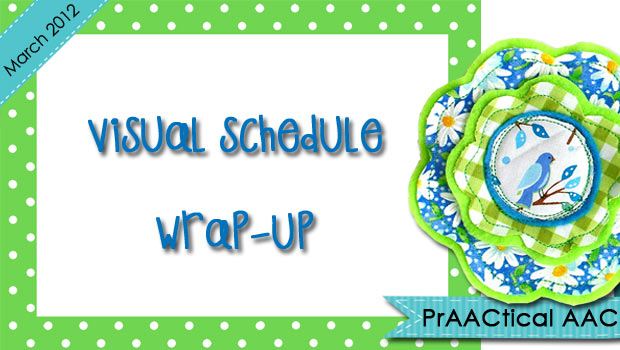
In this last post on our March Strategy of the Month, visual schedules, we address a couple of questions about using schedules and end with a list of helpful resources. Lots to click on and explore! – What about activities that don’t happen very often? How do we incorporate those into the schedule? Many of the learners with whom we work get quite stressed when the typical routine is violated. It could be an undesired change, like a fire drill or a dentist appointment. Or it could be that a regular event gets cancelled, such as when our music therapist is out sick or when outdoor recess is cancelled due to bad weather. Even changes that involve the addition of a positive event, such as a birthday party or a special classroom guest, could lead to stress and meltdown. If we have advance notice of the change, we can use... [Read More...]
March 3, 2012
by Carole Zangari -

Here’s a riddle for you. Read the clues and guess what tool or strategy we’re talking about. Clue #1: It’s used in almost every classroom and therapy room serving students with ASD. Clue #2: The one for Johnny looks almost the same as the one for Jenny. Clue #3: It looks as nice in June as it did in September. If you guessed visual schedules, you’ve just named our March Strategy of the Month. Visual Schedules? But everybody already uses those. Why post about those? — Here’s why. – They’re ubiquitous. And yet when we talk with educators and SLPs about how the children are doing with their schedules, we get a look and a shrug. “Okay, I guess.” To be sure, okay is better than not okay. But visual schedules have so much potential to make lives better for clinicians, educators, and people with AAC needs that okay isn’t... [Read More...]






